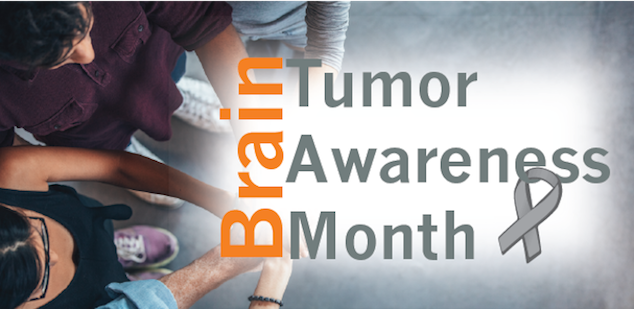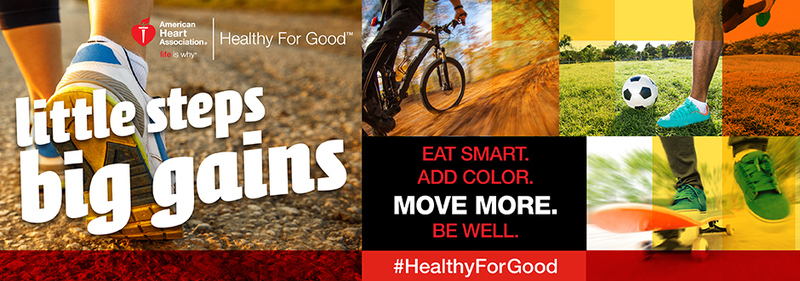
Amidst the beauty of the orange and red leaves there’s one other striking color that catches eyes every October, pink! The minute we see the ribbons, balloons and NFL football players’ gloves and cheerleaders shaking pink pompons we know it’s Breast Cancer Awareness month. But, breast cancer awareness month is more than just wearing a pink ribbon or article of clothing or joining in on a walk or fundraiser, it’s a reminder to make sure you’re taking the necessary precautions to take care of yourself and loved ones.
In 2017, the American Cancer Society estimates there will be 252,710 new cases of invasive breast cancer. Regular mammograms increase your chances of finding cancers before the symptoms become present. Those with an increased risk because of age, genetics, etc. are recommended to have MRI screenings as well.
Each year we see posts about how to do your own exams at home and early detection signs so instead of that we will give you some ways that you can join the fight against breast cancer.
Get the Breast Health Guide - Visit the National Breast Cancer Foundation site and sign up for your free Breast Health Guide. Then, share the link with your friends and family.
Become an Advocate - Stay up-to-date with legislative actions and current advocacy initiatives that support funding and treatment.
Volunteer or Hold a Fundraiser - Many programs are available through Susan G. Komen and the National Breast Cancer Foundation to raise money to provide mammograms, support and education.
Breast Cancer Awareness should be practiced year round but October is a special month in the fight. Celebrate the survivors and remember those whom lost the battle by wearing your pink this October. But remember, early detection is key in increasing survival rates. Set up your reminders and stay in-the-know with the latest research so you can make the right choices for you and your loved ones.

With all of the recent news about hurricanes and flooding, have you wondered how you would be able to help in a natural disaster? Emergency responders aren't always nearby and you may be able to save a life by taking simple actions immediately.
FEMA provides an overview that can be used for your own education, as well as your community. The highlights are:
You Make a Difference - by acting quickly and purposefully, you can save lives.
Call 9-1-1 - operators are highly trained and will help you assess the situation, take appropriate action and be as safe as possible.
Stay Safe - use all your available senses like sight, hearing and smells to use your best judgement to determine your course of action.
Stop the Bleeding - identify the source of bleeding, finding something to put between the blood and your hands, and applying firm, steady pressure until EMS arrives.
Position the Injured - if a person is conscious and breathing, allow them to position themselves, but if unconscious, learn the proper positioning techniques.
Provide Comfort - use simple words to comfort and engage with the injured and provide practical assistance.
Learn more about how you can help your community in times of emergency at ready.gov/until-help-arrives.

A total solar eclipse is targeted to sweep across the United States on August 21. A solar eclipse occurs when the moon blocks any part of the sun. Check here for the path that the total eclipse will take in North America. Our country hasn’t experienced a solar event like this since 1979, so you may not be aware of the potential dangers to your eyesight.
NASA has provided some safety tips that will allow interested viewers the ability to participate without causing permanent damage to the eyes. Highlights include checking the safety authenticity of viewing glasses for basic proper safety viewing standards, including:
- Having a designated ISO 12312-2 international standard
- Have the manufacter’s name and address printed on the product
- Not be older than three years or have scratched/wrinkled lenses
- Not be a homemade filter
- Not be ordinary sunglasses – even very dark ones should not be a replacement for eclipse viewing glasses or handheld solar viewers
Check your glasses or viewers as indicated here. After verifying you have the appropriate equipment, don’t forget about using them correctly:
- Always supervise children using solar filters or viewers
- Stand still and cover your eyes with the eclipse glasses or viewer before looking up at the sun.
- Look away from the sun before removing your glasses/viewer.
- Do not look at the sun through an unfiltered camera, telescope, binoculars or other device.
- Don’t look through cameras, telescopes, binoculars, etc while using your solar viewer or eclipse glasses.
Watching an eclipse without taking these precautions can result in solar retinopathy, an injury to the retinal tissues that can result in impaired vision, sometimes permanent. Prepare ahead, so you can enjoy this amazing, natural phenomenon in a safe way.

The facts about brain tumors in the United States are sobering. With nearly 700,000 Americans living with a primary brain tumor and 78,000 people diagnosed with a tumor in 206, raising awareness and taking action to help defeat brain tumors is critical. The month of May is Brain Tumor Awareness Month (BTAM). Click the image below for key statistics.
The National Brain Tumor Society has created a list of ideas to get involved in the fight against brain tumors. Some ideas this month include:
- Read and share informative blog content with your networks, friends and family - "get up to speed" on the latest content from the brain tumor experts.
- Register your own team at the closest NBTS Brain Tumor Walk, Ride, Race or Polar Plunge fundraising events. Check out the list here.
- Chat with the experts during a BTAM Twitter chat on May 18.
- Join the Expert Video Session on May 25 with Dr. Paul Mischel to learn about his most recent brain tumor research discoveries.
- Create your own community event to raise money for brain tumor research.
Through more research and testing, the National Brain Tumor Society hopes to help discover new sources of treatment and fighting for policies to help improve the lives of patients, as well as providing resources and information to the public.
For more information on brain tumors, check this website and/or download a brochure today.

Stress Less with Mindful Movement
You may notice you feel better after you exercise. Most people experience increased energy and an improvement in overall well-being as physical activity becomes routine. Studies have shown that regular physical activity can help relieve depression and may even lower your risk of developing it.
If you are not the active type, are older or have physical limitations, you can still add healthy movement to your life.
For example, the National Institutes of Health (NIH) describes yoga, tai chi and qi gong as centuries-old, mind-body practices. They involve specific postures and movements combined with mental focus, breathing techniques, and meditation or relaxation. Even walking can be done mindfully as a form of meditation.
Some research studies have suggested that practicing these mindful movement activities may help:
- manage stress, depression and insomnia
- lower blood pressure
- improve balance and stability
- relieve chronic pain
- improve quality of life and mood in people with heart disease, cancer and other chronic illnesses
- motivate you to exercise more and eat healthier
A recent study concluded that yoga may improve heart health, including body mass index (BMI), blood pressure, cholesterol and heart rate. More research is needed.
But it’s clear that yoga is becoming more popular. In the last 10 years the number of Americans practicing yoga has nearly doubled. It’s now practiced by more than 21 million adults and more than 1.5 million children.
Yoga and other mindful practices can be gentle and may be done by just about anyone, anywhere, with no special equipment needed.*
Look for classes in your community or instructional videos, books and websites.
Whatever way you choose to get active, your heart will benefit. And you may find yourself feeling happier and more relaxed, too.
*There is a wide variety of yoga styles; not all are gentle. The NIH recommends that people with high blood pressure and women who are pregnant should modify or avoid some yoga poses. Talk with your healthcare provider and a qualified instructor if you have concerns.

Fun for the Whole Family
Would you rather spend your free time with your family than at the gym? Look for ways the whole family can get active together! You’ll all benefit, because regular physical activity can help:
- control weight
- build strong bones and prevent bone loss
- improve sleep
- relieve depression
- decrease risk of heart disease, stroke, diabetes and high blood pressure
- improve quality of life at all ages
It may sound impossible to add even one more thing into your busy family schedule. Try keeping a log of each family member’s daily activities for one week. You’ll get an idea of when you might be able to get everyone together for physical activity. It can also help you see which activities you can cut back on, like screen time.
As kids get older the appeal of the playground fades and the lure of electronic devices gets stronger. It can be hard for them to get an hour of physical activity each day if they don’t take part in P.E. or sports. While an hour each day might sound like a lot of time, there are many ways to build activity into your family routine. Even smaller blocks of 15 or 20 minutes will add up.
Here are some family activity ideas:
Enjoy the great outdoors. Take a walk or bike ride in your neighborhood. Put up a basketball hoop in the driveway or play catch in the yard. Head to the park with the dog or a soccer ball.
Rediscover your inner child. Play a family game of tag or hot potato. Try a pillow fight or squirt gun battle. Have a dance party and take turns playing DJ.
Replace screen time. Instead of heading right for the TV or computer after dinner, make that your active family time. Switch up movie night with bowling or miniature golf.
Make it a friendly competition. See who can hula hoop the longest. Race to the corner store. Have a jumping jack contest. Keep track of everyone’s physical activity for a month, and offer a prize to the family member who logs the most hours.
Plant a garden. Growing fruits and veggies gives your family a reason to get outside each day. It also encourages healthy eating habits.
Team up on chores. Rake leaves, shovel snow, do yardwork and tackle other home-maintenance projects as a family. In the end, you will have improved your home and your family’s health.
Park and walk. Make it a habit to park a bit further from school or church and walk the rest of the way.
Remember, active parents raise active children. Set an example and make fitness a priority for you and your family.

Get in the Game: Sports Fitness
Participating in sports can be a great way to get active or stay that way. Most sports require a combination of strength, endurance, flexibility and balance. They typically involve regular practice, which helps you stay active. And the goal of competing or improving performance can be a great motivator.
The amount of active training will vary with each sport. You would not train the same way for volleyball as for soccer. You might, however, cross train. Cross training includes a variety of fitness activities.
Some sports offer moderate levels of activity, and some are more vigorous. Moderate activity means you can usually talk or hold a conversation while you do it. Vigorous activity means you may only be able to say a few words before getting out of breath.
The weekly goal for adults is at least:
- 150 minutes of moderate exercise OR
- 75 minutes of vigorous exercise OR
- a combination of the two
Kids should get at least 60 minutes of moderate to vigorous activity every day.
Team and individual sports can be a fun way to meet some of your family’s activity goals. Look for opportunities through your workplace, school or community recreation center. Many cities have amateur leagues for kids and adults.
EXAMPLES
| Moderate | Vigorous |
|---|---|
| Softball | Soccer |
| Volleyball | Basketball (game) |
| Downhill Skiing | Snowshoeing |
| Golf | Hockey |
| Ballroom Dancing | Football |
| Hunting & Fishing | Racquetball |
| Table Tennis (ping pong) | Boxing or Sparring |
| Tennis (doubles) | Tennis (singles) |
Choose sports and recreational activities that appeal to you. Do you prefer the continuous activity of soccer or basketball… or the precision of golf or archery? Do you enjoy the team atmosphere of volleyball or baseball… or the one-on-one competition of racquetball or boxing?
Whatever sport you choose, you’ll be getting active which will help keep your heart healthy.

Walk Your Way to a Healthier Life
You can get active in lots of ways, but walking is one of the easiest steps you can take to improve your health. It’s also one of the safest, least expensive and most sustainable forms of exercise. For such a simple activity, it has so many benefits!
Research has shown that walking at least 30 minutes a day can help you:
- reduce your risk of heart disease, stroke and type 2 diabetes
- improve your blood pressure, blood sugar and blood cholesterol levels
- prevent weight gain and lower the risk of obesity
- improve your mental well-being
- increase your energy and stamina
- reduce your risk of osteoporosis, breast cancer and colon cancer
For every hour of brisk walking, life expectancy for some people may increase by two hours. The American Heart Association recommends adults get at least 150 minutes of physical activity each week.
It’s not all or nothing; it’s step by step.
Maybe you haven’t been active for a while. No problem. Just get started, even if it’s only a few minutes a day at first.
Set a reachable goal just for today. Then you can work toward your overall goal of 150 minutes a week or more as you get in better shape. Gradually increase your time or distance each week.
If it’s easier on your body and your schedule, you can split up your walks into 10 or 15 minutes each. Every step counts!
Even if you’re already active, here are some ways you can add more steps into your day:
- Take the dog out for a walk.
- Take the kids to the park or playground.
- Park farther from the entrance to your workplace, school, grocery store, restaurants, etc.
- Take the stairs instead of the elevator, even if just for one or two floors.
- Window shop at the mall or downtown.
- Walk to a nearby restaurant for lunch instead of driving.
- Catch up with a friend by walking around the block while you chat on the phone.
All you have to do is lace up with a comfortable pair of shoes and walk. It’s that easy!
Source: American Heart Association

Have you ever thought about running a race for the first time, but didn’t know where to start? When it comes to running, a 5K or 3.1 miles, is the perfect distance for new runners. From training to tackling those race day jitters, here are some helpful tips to ensure you crush that first race.
Get Started
Sign up for your first 5k. Search one for one close to you or a destination race if you enjoy traveling. If there is a cause that you feel passionate about, see if there is a 5K that helps to raise money to support that cause. Active.com has a great list to start with and you can search locally. By committing to a race, it can provide that additional motivation to get you moving.
Make a Plan
The internet is full of resources that can help you plan. Find a plan that fits your goals.
- Shape.com has a page dedicated to training plans – from A Beginner’s Guide to Running a Race with Your BFF.
- Couch to 5K App - For anyone who has wanted to try running but couldn’t figure where to start, this app will help you on your journey. A free eight-week program gives users three workouts per week to get you ready for an upcoming race.
- Runnersworld.com is another great site where you can select a plan based on your own goals.
Find a Running Partner or Community
In addition to accountability to keep you running toward your goal, running partners understand the struggles and pains and are a great sounding board for advice when you feel like you aren’t making progress or want to give up.
Get a Good Pair of Running Shoes
Find a store that can fit you for shoes according to your stride and where your foot first comes in contact with the ground. Getting the right shoes can help prevent issues like shin splints, blisters, tendonitis and plantar fasciitis. Make sure you break your shoes in slowly – never run in a new pair of shoes on race day.
Enjoy Race Day
Once you’ve put in the work and trained for your big day, you don’t want to spoil it by making any rookie mistakes.
- Get good sleep the night before – have all your running accessories ready to go, including your race bib and safety pins.
- Eat a healthy dinner the night before & drink plenty of fluids.
- Get to the race early – 45 minutes to 1 hour should give you plenty of time to stretch, find the starting line, use the restroom and mentally prepare.
- Start your race slowly – don’t let your adrenaline and excitement cause you to go too fast. Going too fast at the beginning will burn your energy more quickly and you might not have enough energy to finish.
- Pace yourself – start slow and gradually speed up over time so you can finish strong.
Celebrate Your Finish
You’ve just accomplished something amazing so take time to celebrate it! Don’t forget to cool down and slowly refuel your body with protein, carbohydrates and water. And start looking for your next 5K!

